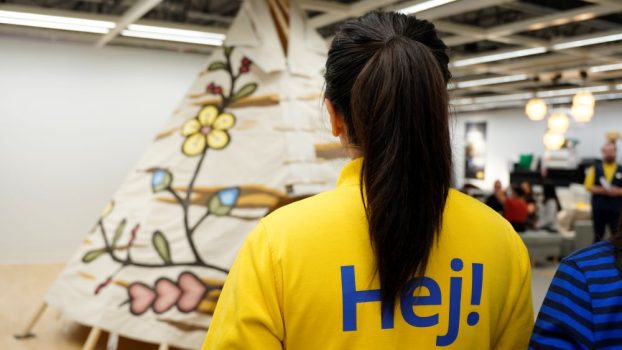
When travel company Black & Abroad set out to launch its newest marketing effort, it envisioned a simple email campaign. The brand had no idea it would receive a crash course on algorithmic biases in AI.
Black & Abroad’s newest creative work, “See You There,” was developed from the idea that every trip starts by picturing yourself at the final destination. Using generative AI, the brand created personalized landing pages for prior Black & Abroad customers, placing them in travel destinations like Senegal, Ghana or France.
The goal of the campaign is to place travelers inside AI-created inspirational images to help them picture themselves in new, exciting destinations.
“This campaign positions Black & Abroad as not only a trusted voice within the travel industry, but as a source of insightful commentary on the pulse of how data and technology impacts the future, regardless of industry,” says Black & Abroad co-founder and chief strategy officer Kent Johnson.
But working on the campaign led to the team, which included McCann on creative, to uncover biases within these AI models.
The team found that the generative models tend to depict Black travelers in instances of African poverty as opposed to tourist shots, suggesting that AI models may have been trained on incomplete and biased photographic data. Gen AI also struggled to reproduce Black & Abroad travelers in some destinations like Machu Picchu in Peru or tapas bars in Barcelona, sometimes going as far as to impose whiteness on the travelers by lightening their skin tones and straightening their hair in the images.
“The writings on the wall are pretty loud and clear — white is the default unless you indicate otherwise on the prompt,” says Black & Abroad co-founder and chief creative officer Eric Martin.
“What’s funny (or not), is that a simple B2C email campaign to reignite our 2024 travel season sent us down a rabbit hole of the dogmatic biases baked into an industry that’s currently revolutionizing the world. This is concerning because as the tech becomes more and more ubiquitous then so will these questionable errors.”
Martin added that the discoveries sent the company on a mission to shed light on the magnitude of the oversight and bias it was seeing in this work. The company aims to incite a call to action for AI companies to overcome these prejudices in its work.
Black & Abroad launched a website showing how its AI models failed to place Black travelers in some locations, and stating that long-standing systems of exclusion and marginalization have led to fewer Black travelers in some iconic locations, meaning fewer photos exist to be used as data for AI models to be trained on.
The site also places the technology in a larger historical context of innovations that were needed in photography and video to overcome biases against Black people. It also highlights Black leaders in AI, while encouraging people to tag their photos in popular travel spots with #WhereIsTheBlackTraveler.

Johnson and Martin say they hope that by adding their discovery and voices to others speaking out about biases within AI, that it will lead to a concerted effort by AI companies to correct these biases.
“The essence we aim to convey through this campaign is the recognition that addressing racial bias within AI mirrors the complexity of tackling it in our tangible reality,” Martin says. “Collectively, these initiatives represent meaningful steps toward fostering a more inclusive and equitable AI landscape and societal fabric.”
The creative work follows past Black & Abroad campaigns like “Black Elevation Map” in 2022 and “Go Back to Africa” in 2019. The new campaign was developed with McCann Canada, while Initiative Canada led the media strategy.























